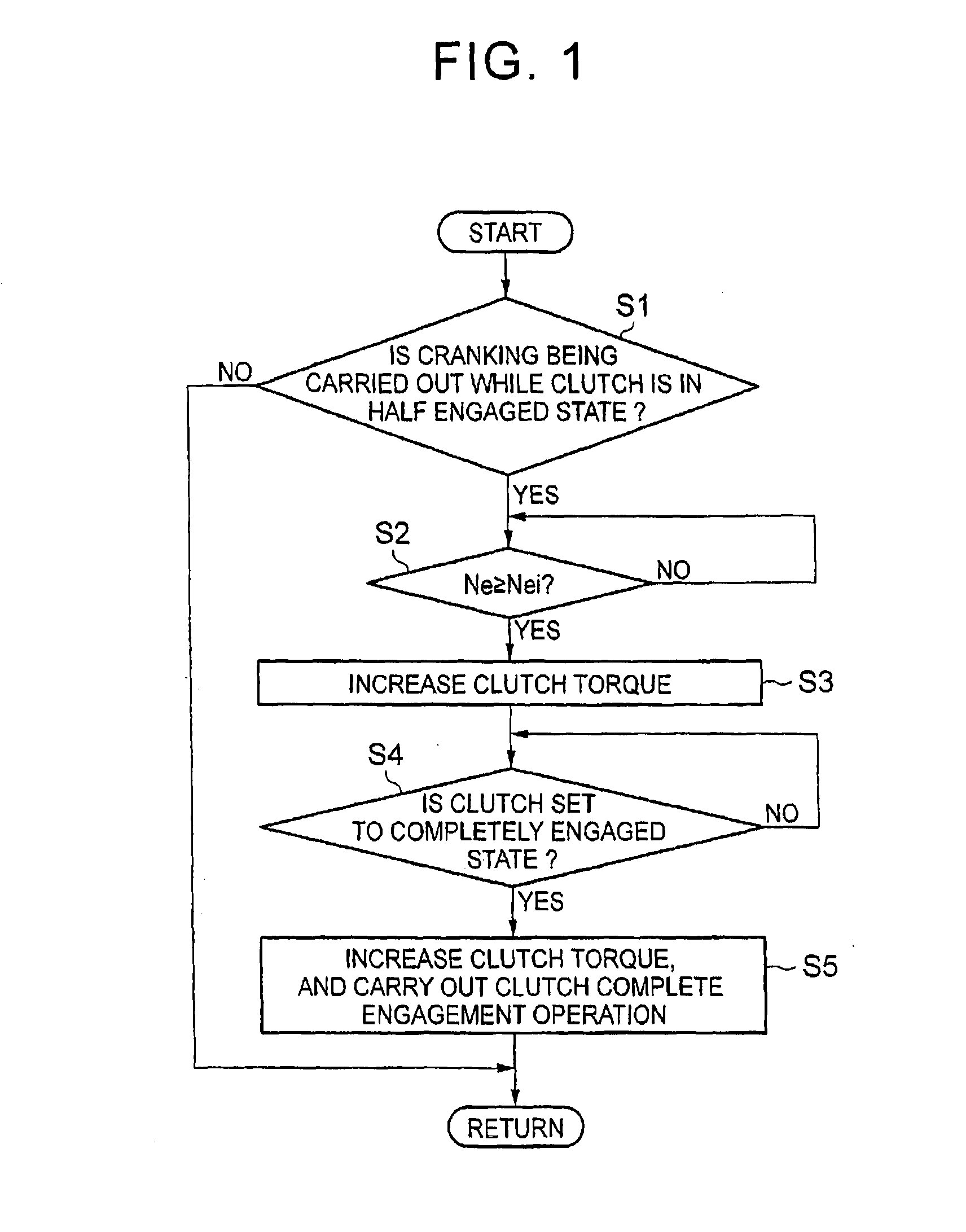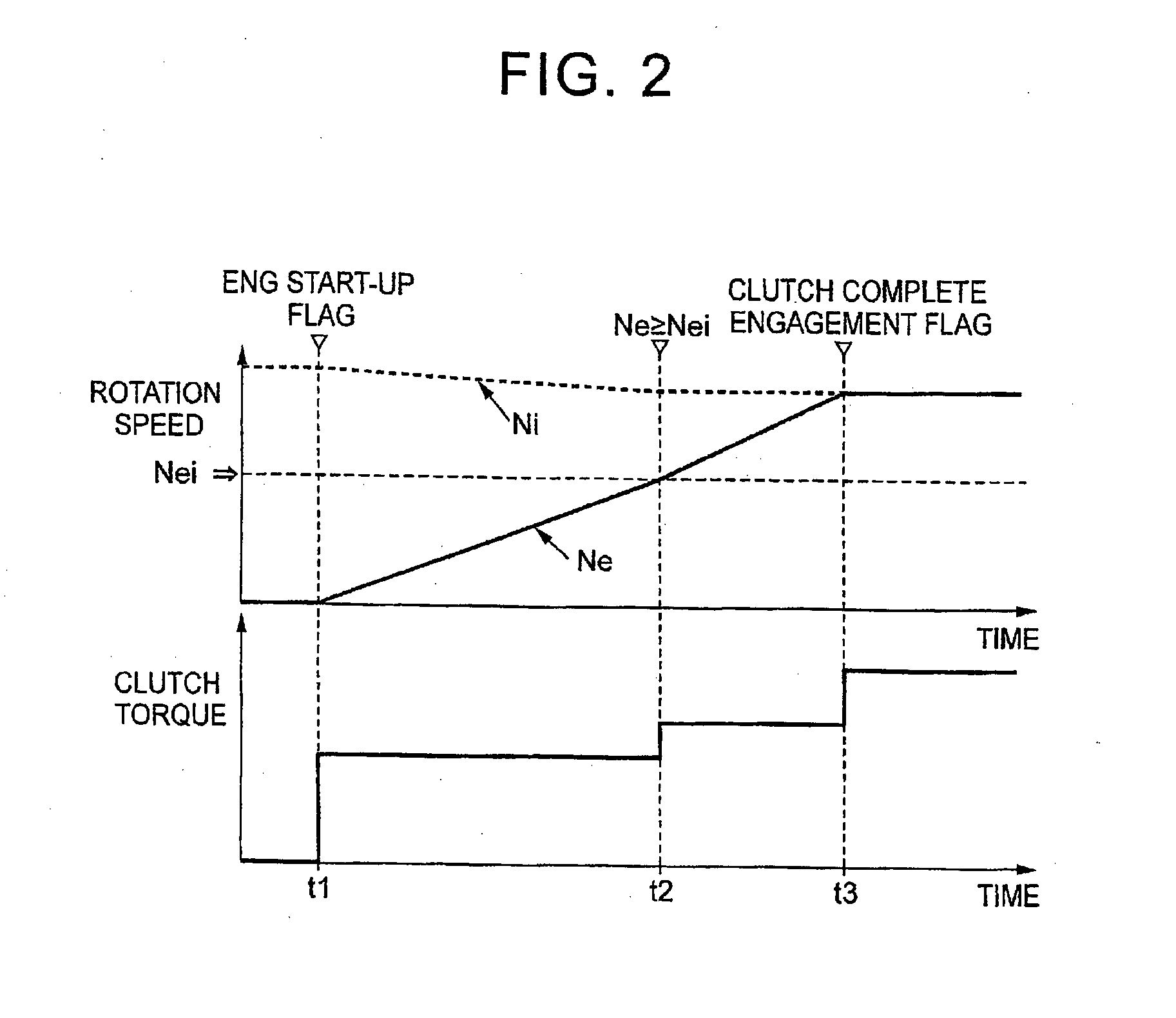Control system and control method
a control system and control method technology, applied in mechanical equipment, transportation and packaging, gearing, etc., can solve the problems of deteriorating fuel economy, increasing exhaust gas, and consuming energy, and achieves quick start-up of the engine, increase the transmission torque capacity of the clutch, and increase the engine rotation speed
- Summary
- Abstract
- Description
- Claims
- Application Information
AI Technical Summary
Benefits of technology
Problems solved by technology
Method used
Image
Examples
Embodiment Construction
[0031]The invention provides a control system for a vehicle including an engine and a clutch. The engine starts up by cranking. The clutch transmits torque for the cranking to the engine via the clutch. The clutch is able to change its transmitted torque capacity. A motor for the cranking may be a so-called starter motor or may be a motor (or a motor generator; hereinafter, these are collectively referred to as motor) that generates driving force for propelling the vehicle. The vehicle including the motor as a driving force source in addition to the engine is called hybrid vehicle. This kind of vehicle is able to not only travel by using the engine or travel by using both the engine and the motor but also, for example, travel by using only the motor or travel while carrying out energy regeneration with the motor. The hybrid vehicle is able to be set to a drive mode in which, for example, the engine is stopped while the vehicle is traveling by using the motor and then the engine is r...
PUM
 Login to View More
Login to View More Abstract
Description
Claims
Application Information
 Login to View More
Login to View More - R&D
- Intellectual Property
- Life Sciences
- Materials
- Tech Scout
- Unparalleled Data Quality
- Higher Quality Content
- 60% Fewer Hallucinations
Browse by: Latest US Patents, China's latest patents, Technical Efficacy Thesaurus, Application Domain, Technology Topic, Popular Technical Reports.
© 2025 PatSnap. All rights reserved.Legal|Privacy policy|Modern Slavery Act Transparency Statement|Sitemap|About US| Contact US: help@patsnap.com



